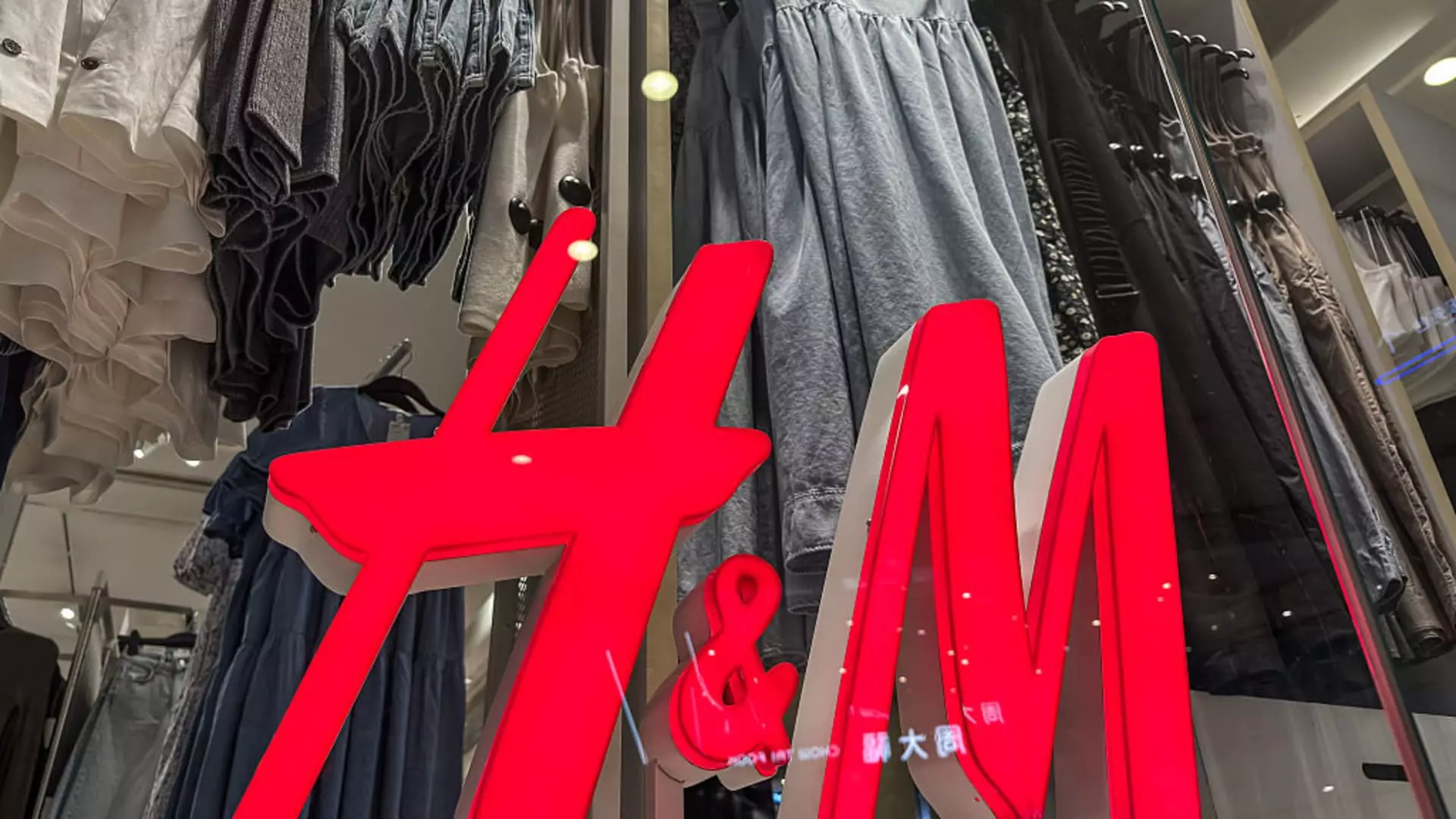H&M, the Swedish retail powerhouse, recently observed a glimmer of positivity with a reported increase in demand, sending the company’s shares on a brief ascent. On the surface, a 3% rise in sales for June suggests that consumer interest may be returning as summer approaches. However, the broader narrative is not as bright. Despite this slight uptick, CEO Daniel Erver has candidly acknowledged the palpable caution among consumers, primarily driven by the “uncertain times” we currently find ourselves in. As much as executives feign optimism, the truth reveals an intricate tapestry of economic factors that are influencing purchasing behaviors, mostly characterized by heightened price sensitivity.
As the world’s second-largest retailer, H&M’s portfolio extends beyond its eponymous brand to include popular names such as Cos, Arket, and Weekday. However, it is evident that the company is entangled in a web of challenges wrought by external pressures—most notably U.S. trade tariffs and a volatile economic environment. The manicured façade of rising sales does little to disguise the trepidation lurking beneath the surface even as shares temporarily attempted to ascend.
The Tariff Trap: A Looming Crisis
While specifics on the toll of U.S. tariffs remain shrouded in ambiguity, H&M’s leadership has signaled vigilance. They are keenly “monitoring developments” while contemplating price hikes to stave off the added costs associated with tariffs that could potentially strain profitability. Erver’s acknowledgment of competitors raising prices paints a grim picture of the retail landscape, one where survival hinges not on price cuts and market share, but rather on strategic positioning against headwinds that threaten to destabilize established markets.
The U.S. remains a cornerstone for H&M, but the nuances of operating within this pivotal market cannot be overstated. Understanding that the repercussions of tariffs are likely to materialize further down the line, Erver noted that clarity would emerge once the current pause on levies finishes. The reality is that the retail environment is a swirling storm, and H&M must wield its supply chain flexibility effectively to navigate treacherous waters.
The Cost of Inaction: Weaker Sales Continue
Despite the optics of an increased demand, the company’s fiscal second quarter results tell a starkly different tale. With revenues dipping to 56.71 billion Swedish krona, the numbers fell short of expectations, highlighting a trend of underperformance. The marginal sales growth of 1% only layers over the larger issue: H&M’s struggle to keep pace with competitors like Zara, as well as enterprising low-cost challengers such as Shein and Temu. This is not simply a matter of marketing or brand loyalty; it’s a full-blown existential crisis for a retail giant caught in a relentless price war amid dwindling consumer confidence.
Moreover, rising costs linked to a stronger U.S. dollar and elevated freight charges have dented operational profitability, adding to the woes of a company already reeling from falling sales figures. One must ponder: what will it take for H&M to regain its competitive edge? Continually blaming external economic variables appears insufficient. Companies must adapt and innovate in ways that resonate with an increasingly discerning consumer base that is no longer willing to accept lackluster offerings.
An Uncertain Future: Strategic Retrenchment
As H&M braces for a challenging road ahead, the announcement of 200 store closures scheduled for 2025 only deepens the narrative of adversity. While it is essential for the company to realign its strategy and venture into growth markets with 80 new store openings, the essence of retrenchment suggests that H&M is acknowledging a need for drastic change. The retail sector is notoriously ruthless, where complacency and blinkered strategies can lead to rapid declines. As the company grapples with its identity in a fierce market, one must wonder— can H&M provoke enough transformation to recover from its current malaise?
What lies ahead for the fashion retailer, amidst a landscape riddled with aggressive competitors and shifting consumer frameworks? The reluctance to embrace innovation in conjunction with cautious expansion raises more questions than it answers. Ultimately, the odds appear increasingly stacked against H&M unless it galvanizes a substantial reinvention reflective of not just the trends, but the values and aspirations of today’s consumers. The battle for relevance has begun, and the stakes have never been higher.

